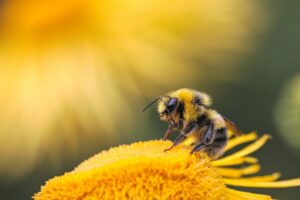
Led by Dr Gunjan Gera of Gourmet Waiuku Limited, the new project is researching ways to protect the long-term sustainability of New Zealand horticulture, including how to enhance the performance of bumblebee hives using pheromones.
MPI is contributing $160,000 towards the $400,000 project through its Sustainable Food & Fibre Futures (SFF Futures) fund.
Dr Gera says bumblebees are often used for pollination in berryfruit crops, glasshouses and other covered crop areas as the bees tend to travel only about 200 metres from their hives and don’t mind enclosed spaces, whereas honeybees prefer to fly to flowers further afield.
“In the field, the queen bumblebee of a commercial hive lives for approximately 8 to 10 weeks and the hive winds down once the queen dies,” says Dr Gera.
“With fewer worker bees, the hives can appear less active when compared to honeybees and there can be variation in vigour and productiveness.
“Our project will study various factors and compounds in conjugation with the bumblebee queens to see if we can extend the life of a hive to at least 12 to 18 weeks. If this works, we have a way of complementing nature, using a pheromone substitute.”
MPI investment programmes director Steve Penno says this project could help increase the productivity of bumblebee hives dramatically.
“Enhancing bumblebee activity would mean better pollination for growers, which means higher yields and better quality produce,” says Penno.
“We’re hoping to lead the way in New Zealand, but it will involve a good deal of trial and error given the limited progress globally in this area,” says supporting consultant of the study, Dr Jo Stephens.
As well as the bumblebee research, the project will also look at developing technology to rear Limonicus predatory mites. This mite is effective in controlling thrips, whiteflies, and other mites in greenhouses and protected culture systems. While it occurs naturally in New Zealand, it is currently only reared overseas and is re-imported for New Zealand growers.
“This is expensive, time-consuming, and there’s always the risk of supply shortages,” says Dr Gera.
“If we can successfully rear these mites for commercial production and release them in New Zealand it will be far more cost-effective to control pests.”




























































































